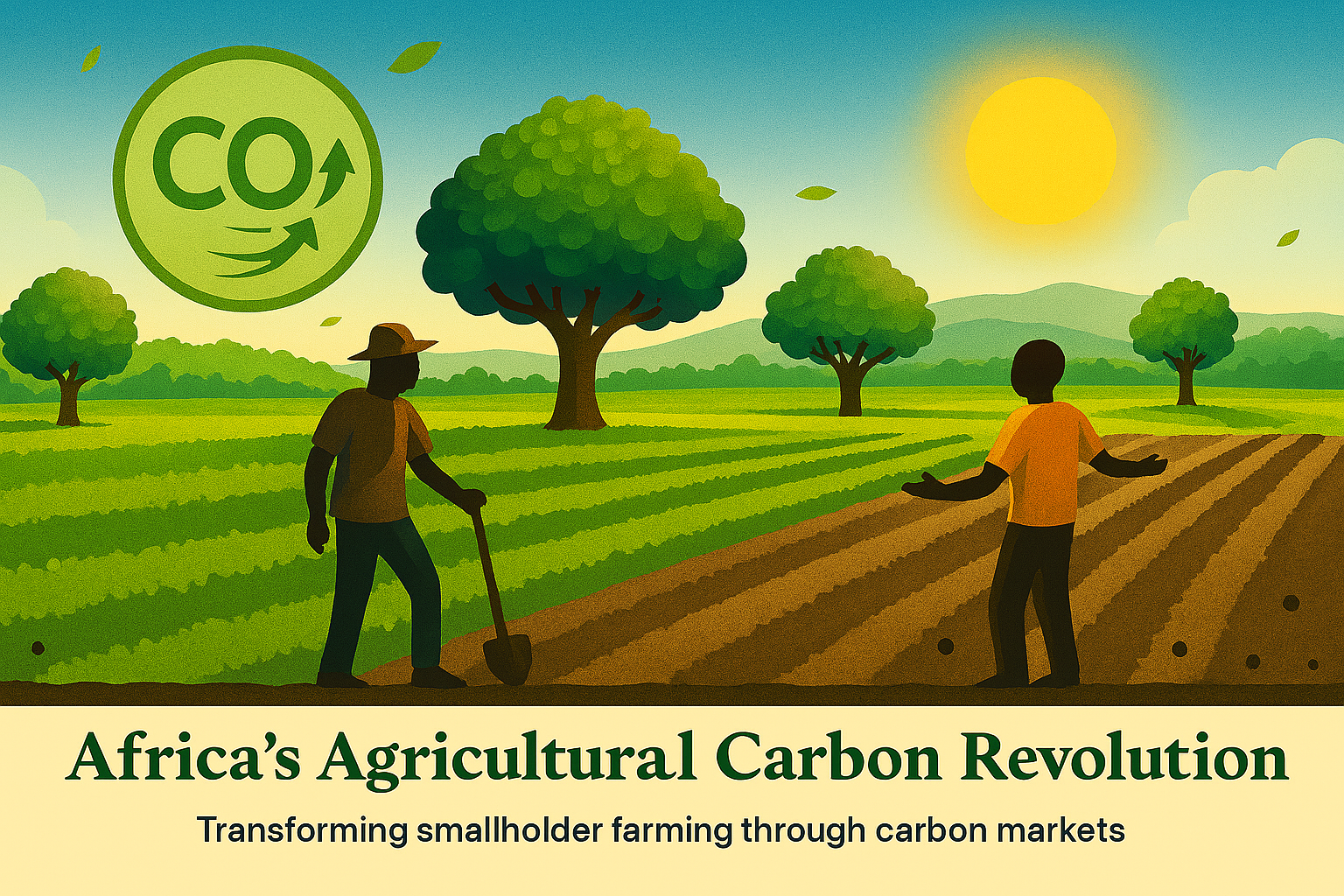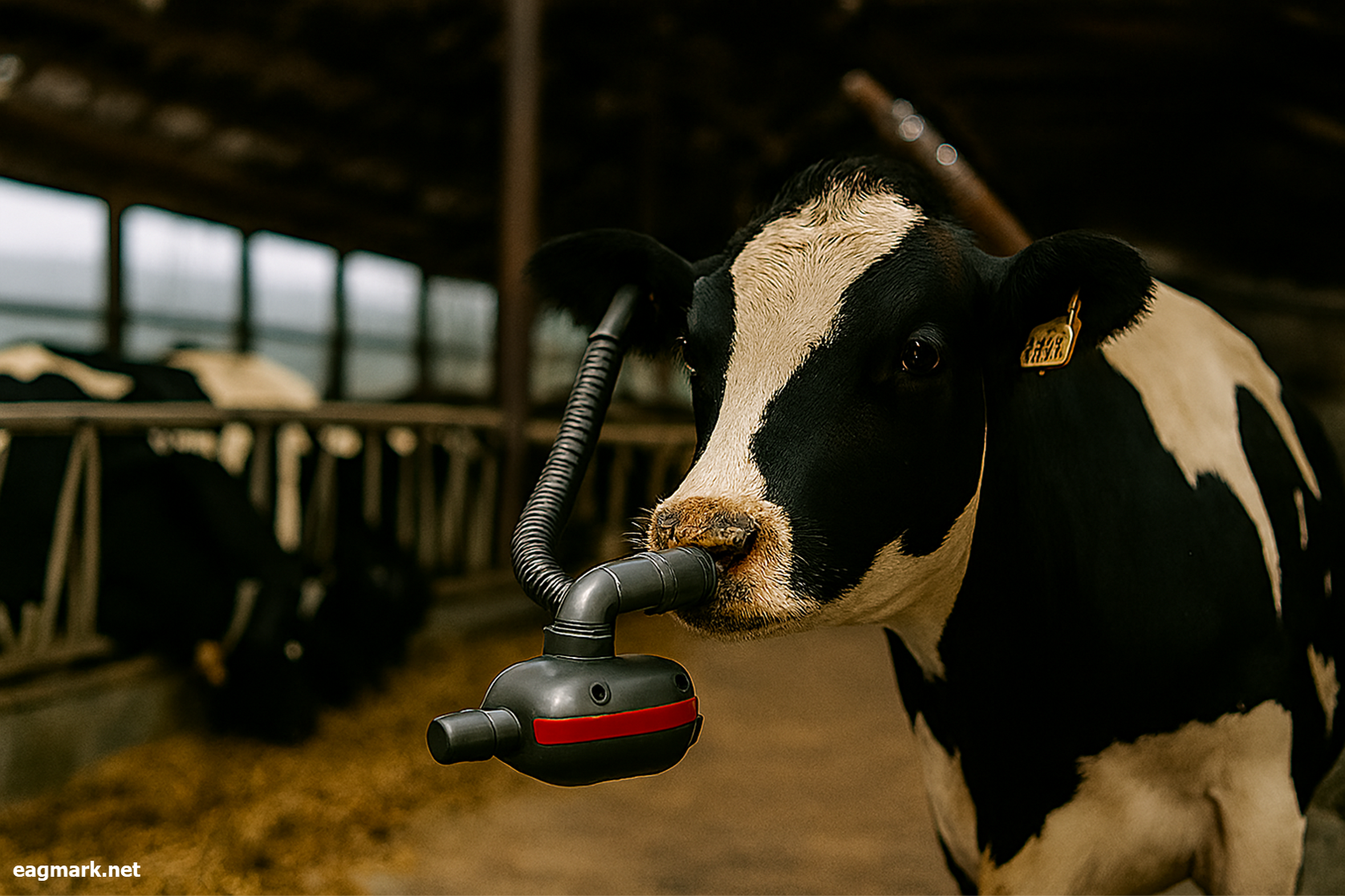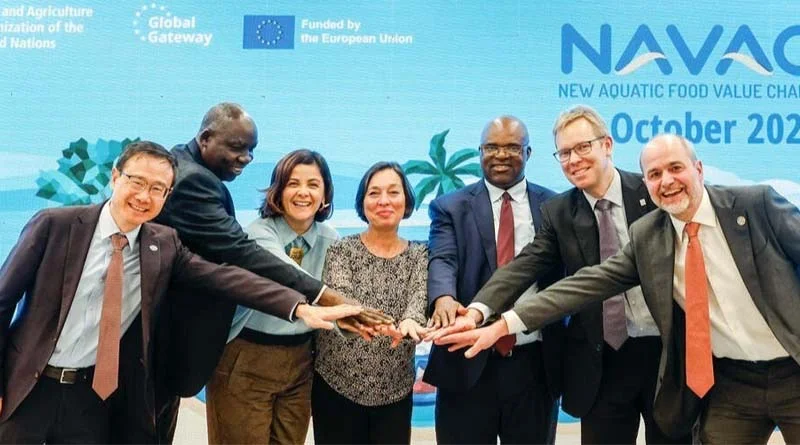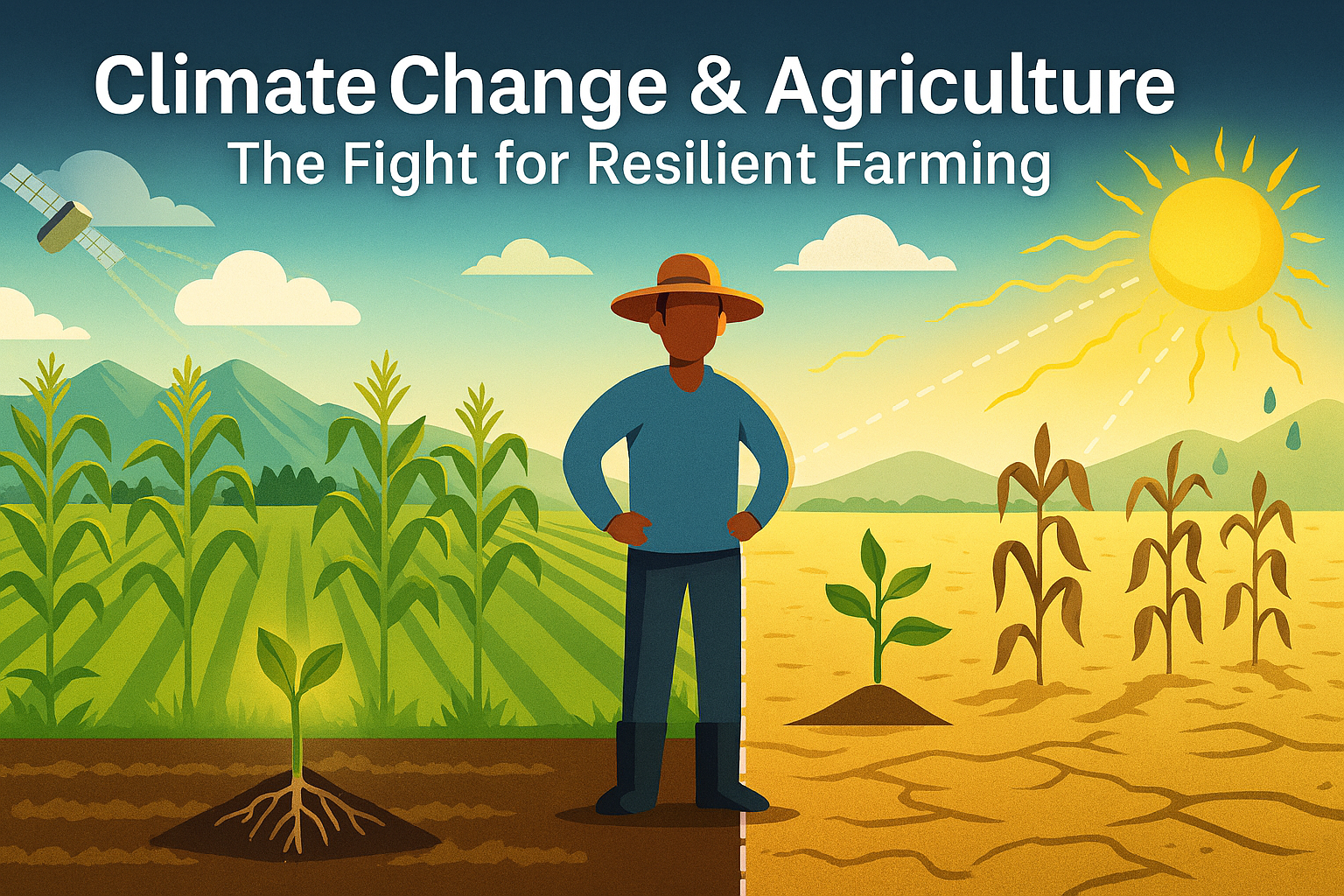
As I walk through coffee plantations in Kenya's Highlands, talking with farmers who've recently enrolled in carbon credit programs, the transformation underway becomes tangible. What was once dismissed as abstract climate policy is now translating into real income for some of Africa's most vulnerable farming communities. But this shift didn't happen overnight—and its future remains uncertain.
The Agricultural Emissions Challenge
According to the Food and Agriculture Organization's latest 2024 data, global agrifood systems account for approximately 30% of anthropogenic greenhouse gas emissions, reaching 16.2 billion tonnes of carbon dioxide equivalent annually. Within these systems, crop and livestock activities contribute 7.8 gigatonnes of CO2 equivalent, or roughly 48% of total agrifood emissions.
The burden falls disproportionately on developing nations. While agriculture represents just 7-11% of emissions in wealthy countries, the picture differs dramatically across Africa. Despite contributing only 3.9% of global carbon dioxide emissions, Africa bears the brunt of climate impacts. Studies project that if current climate trends continue, crop production across the region could decline by 18% by 2050, putting approximately 200 million people at risk of extreme hunger.
For context, I recently spoke with Mr. Bonface Oduor, an agricultural economist who put it bluntly: "We're facing a paradox. African farmers emit the least but suffer the most. Carbon markets offer a mechanism to address this injustice—if structured correctly."
Understanding Carbon Markets Beyond the Buzzwords
Carbon markets operate on a straightforward principle: one credit equals one metric ton of CO2 equivalent reduced or removed from the atmosphere. Yet implementation proves far more complex.
Two distinct market types have emerged. Compliance markets, regulated by governments, mandate emission caps for specific industries. The voluntary carbon market (VCM), valued at approximately $1.4 billion in 2024 according to multiple market analyses, allows companies to offset emissions voluntarily—often driven by environmental, social, and governance (ESG) commitments.
The market faces significant headwinds. Average carbon credit prices dropped to $4.80 per ton in 2024, representing a 20% decline from 2023. However, prices vary dramatically by project type. While REDD+ (forest conservation) credits average around $7 per ton, afforestation and reforestation projects command approximately $24 per ton, and biochar projects reach $177 per ton.
The future trajectory appears more optimistic. Market projections estimate growth to $7-35 billion by 2030, potentially reaching $250 billion by 2050.
Africa's Untapped Potential Meets Growing Momentum
Africa currently captures only 16% of the global carbon credits market despite possessing vast potential for nature-based climate solutions. The continent has utilized merely 2% of its nature-based solution potential through carbon markets—representing one of the world's most significant untapped opportunities.
Tanzania leads African carbon credit generation, capturing 22.7% of total credit issuance in 2024, largely through REDD+ initiatives in the Eastern Arc Mountains and Miombo woodlands. The Kilosa Improved Forest Management Project alone generates over 8 million carbon credits annually across 380,000 hectares.
Kenya has established itself as a regulatory pioneer. The country's comprehensive Climate Change (Carbon Markets) Regulations 2024 established a national carbon registry, mandatory community benefit-sharing mechanisms, and alignment with international standards. During my visit to Kenya's Embu County, I witnessed the practical implications: farmers now have legal protections ensuring carbon revenues translate into local development.
The Numbers Tell a Story
The Africa Carbon Markets Initiative has secured over $1 billion in demand-side commitments for African carbon credits by 2030, including $650 million in purchase intentions from Standard Chartered, Vertree, Nando's, and the UAE Carbon Alliance.
Yet concentration remains problematic. Nearly 90% of Africa's recent credit supply has historically concentrated in just two project types: cookstoves and deforestation avoidance. Agricultural carbon projects—despite their transformative potential for food security—remain underrepresented.
How Agricultural Carbon Credits Actually Work
Let me walk you through a real-world scenario based on projects I've observed across East Africa.
A carbon project developer approaches a cooperative of 1,000 smallholder farmers in rural Kenya. The developer proposes sustainable agricultural practices: no-till farming, crop residue retention, and agroforestry integration. In traditional systems, farmers burn crop residues—releasing carbon directly into the atmosphere.
Under the new agreement, farmers commit to leaving residues on fields, which decompose naturally and sequester carbon in soil. Third-party verifiers (typically certified by organizations like Verra or Gold Standard) measure baseline emissions and verify reductions. If a farmer achieves a 1.5-ton CO2 equivalent reduction per hectare compared to previous practices, this generates 1.5 carbon credits.
Here's where economics matter. At current market rates, if those credits sell for $10 each (mid-range pricing for agricultural projects), and the farmer receives 60% of revenue after project developer costs, the farmer earns approximately 1,400 Kenyan Shillings per hectare—roughly $10.80 USD.
That might seem modest to Western observers. But for smallholders earning less than $2 daily, it represents supplementary income that can pay school fees or purchase inputs. Nigerian sustainable agriculture projects report that participating farmers have seen average household income increases of 40%.
The Corporate Push: Why Companies Are Buying
The demand side of this equation matters enormously. A McKinsey analysis using NielsenIQ data found that products making ESG-related claims grew 2-8.5% faster than products without such claims, depending on claim prevalence.
In 2024, Shell retired approximately 14.5 million carbon credits, while technology companies like Microsoft have paid premium prices—in some cases exceeding $189 per ton for high-quality removal credits. Microsoft announced purchasing over 3.5 million carbon credit units in January 2025 specifically to offset carbon production during AI development.
Consumer packaged goods companies face particular pressure. Their Scope 3 emissions—those embedded in supply chains—often constitute 80% or more of their total carbon footprint. When Unilever, Nestlé, or Coca-Cola source agricultural commodities from Africa, purchasing credits from those same supply chains creates alignment between business operations and sustainability commitments.
Yet scrutiny has intensified. In 2024, carbon markets faced significant credibility challenges, with major concerns about overstated emissions reductions in categories like REDD+ and cookstoves—particularly impactful in Africa where such projects represent 90% of recent credit supply.
Ground-Level Reality: Success Stories and Cautionary Tales
Kenya Agricultural Carbon Project (KACP)
Launched in 2009 through the World Bank's BioCarbon Fund, KACP engages 30,000 smallholder farmers across 22,000 hectares in western Kenya, focusing on agroforestry, cover cropping, and composting. This pioneering project became Africa's first to sequester carbon in both trees and soil.
I spoke with a participating farmer in Siaya County, who explained: "Before KACP, I never thought about soil as something valuable beyond growing crops. Now I understand it as a carbon bank. The trees provide fruit, the soil is richer, and I receive payments every few years when credits are verified."
Farm Africa's "Growing Green" Initiative
Starting in 2020, Farm Africa partnered with Rabobank's Acorn platform to engage 21,500 smallholder farmers in Kenya's Embu and Tharaka Nithi counties. The model combines carbon credit generation with agricultural extension services—farmers receive training on climate-smart practices alongside carbon revenue.
Tanzania Coffee Agroforestry
Current programs in Tanzania integrate shade trees into coffee plantations. While farmers face short-term income loss as some coffee trees are replaced—resulting in lower initial yields—the diversification provides long-term benefits including food security from fruit-bearing trees. However, project developers caution that based on March 2024 CO2 prices around $50 per ton, income from carbon credits represents only a small fraction of farmers' future income.
This highlights a critical point often obscured by enthusiasm: carbon credits aren't a silver bullet. They're supplementary income that works best when integrated with broader agricultural development.
Challenges That Can't Be Ignored
The Cost Barrier
Transitioning to carbon-sequestering practices requires upfront investment. Seedlings for agroforestry systems, tools for no-till farming, and training programs all carry costs. For farmers operating on razor-thin margins, these investments remain prohibitive without external support.
The Climate Policy Initiative's 2023 report shows that globally, food systems received just 4.3% of climate finance allocations in 2023, with smallholder farmers receiving even less. The mismatch between need and resource allocation remains stark.
Verification Complexity and Costs
Third-party verification ensures credibility but adds expense and complexity. Measuring soil carbon accurately requires sophisticated techniques. Weather variability makes predictions uncertain. For smallholder projects involving thousands of farmers across dispersed geographies, verification costs can exceed project revenues at current carbon prices.
Several projects I investigated had abandoned verification after pilot phases, finding costs unsustainable. Industry insiders estimate verification can consume 30-40% of gross carbon revenue for agricultural projects.
Market Volatility
Price volatility remains problematic. While high-rated credits (A-AAA) averaged $14.80 per ton in 2024, low-quality credits fell to just $3.50 per ton. For farmers planning multi-year investments, price uncertainty creates risk.
Land Rights and Benefit Distribution
Perhaps most concerning are documented cases where carbon projects have displaced communities. The Ogiek community in Kenya's Mau forest was forcibly evicted and their homes destroyed in connection with carbon offsetting projects.
Tanzania announced plans in 2023 to secure $20 billion in carbon credit investments from foreign companies but by July 2024 had collected only $13.4 million, arousing criticism of mismanagement.
These cases underscore why Kenya's mandatory community benefit-sharing mechanisms matter. Without legal frameworks ensuring equitable distribution, carbon markets risk becoming extractive—generating credits for foreign buyers while providing minimal local benefit.
Looking Forward: Five Key Trends for 2025-2030
Based on my research and industry interviews, several trends will shape agricultural carbon markets across Africa:
1. Quality Over Quantity
The Integrity Council for the Voluntary Carbon Market rejected all legacy renewable energy methodologies in 2024, raising standards for credible carbon credits. Expect continued tightening of standards, potentially pricing out lower-quality agricultural projects while creating opportunities for well-designed initiatives.
2. Technology Integration
In February 2024, South Pole deployed AI-powered satellite monitoring across Nigerian solar mini-grids, enabling real-time verification of emission reductions. Satellite-based monitoring will increasingly replace expensive ground verification for agricultural projects, potentially reducing costs and improving scalability.
3. Removal Credits Gain Premiums
Retirements in 2024 hit a three-year low, but the share of removal credits increased, reflecting growing buyer preference for long-term climate impact. Nature-based solutions saw offtake agreements double to 18 deals, securing over 20 million tons of credits at average prices exceeding $20 per ton.
Agricultural practices that actively remove carbon—particularly agroforestry and biochar application—will command higher prices than avoidance projects.
4. Integration with Compliance Markets
COP29 finalized Article 6 rules after nine years of negotiations, establishing a global two-tier registry to integrate voluntary and compliance systems, bringing transparency and preventing double-counting across borders.
This could dramatically expand demand. The Carbon Offsetting and Reduction Scheme for International Aviation (CORSIA) enters its first mandatory phase in 2027, with airlines potentially beginning credit purchases earlier.
5. Regional Coordination
The Africa Climate Summit in September 2025 will position the continent as a solution provider, with AUDA-NEPAD planning to launch the African Gold Standard and announce new investment commitments. Regional harmonization of standards and registries could reduce transaction costs and increase buyer confidence.
What Needs to Happen: A Roadmap
Drawing from successful models and expert recommendations, several interventions would accelerate agricultural carbon market development in Africa:
Blended Finance Mechanisms: Combine donor grants for upfront costs with carbon credit revenue for ongoing operations. The World Bank's BioCarbon Fund model demonstrated this works but requires scaling.
Farmer Cooperatives and Aggregation: Individual smallholder projects rarely achieve economies of scale. Cooperative structures that aggregate thousands of farmers reduce per-farmer verification costs. The Eastern Africa Farmers Federation, representing 25 million smallholder farmers, has been working to ensure small-scale farmer interests are prioritized in carbon trading mechanisms.
Simplified Methodologies: Current verification protocols were designed for industrial projects. Agriculture-specific methodologies that balance rigor with practicality would reduce costs.
Policy Leadership: Countries following Kenya's lead—establishing clear legal frameworks, national registries, and benefit-sharing requirements—will attract higher-quality projects.
Capacity Building: Training local verifiers, agronomists, and project developers creates sustainable ecosystems. Too many projects currently rely entirely on international expertise.
The Verdict: Transformative Potential with Significant Caveats
After months researching carbon markets across Africa, my assessment combines cautious optimism with clear-eyed recognition of obstacles.
Carbon credits will not solve agricultural poverty or climate change independently. They function best as one tool within comprehensive agricultural development strategies—paired with extension services, input financing, market access improvements, and climate-adapted crop varieties.
For this reason, projects integrating carbon credit generation with broader farmer services show the strongest outcomes. When farmers receive agronomic training, access to improved seedlings, and carbon payments simultaneously, adoption rates and satisfaction levels rise dramatically compared to projects offering only carbon payments.
The projected market growth—from $1.4 billion today to potentially $250 billion by 2050—creates genuine opportunity. Africa's carbon market is estimated to grow from $14.99 billion in 2024 to $122.22 billion in 2033, representing a compound annual growth rate of 26.25%. But realizing this potential requires addressing fundamental challenges around verification costs, price volatility, and equitable benefit distribution.
Africa has utilized only 2% of its nature-based solution potential through carbon markets. The remaining 98% represents both opportunity and responsibility. Getting this right matters not just for climate metrics but for the livelihoods of millions of African farmers navigating increasingly unpredictable growing conditions.
As Mr. Oduor reminded me at the conclusion of our interview: "The question isn't whether carbon markets will play a role in African agriculture's future. They already do. The question is whether we'll structure them to benefit farmers or merely extract value from their land."
That question will be answered in the coming decade—in policy decisions, project designs, and the daily choices of millions of smallholder farmers weighing whether carbon-friendly practices serve their families' interests.


